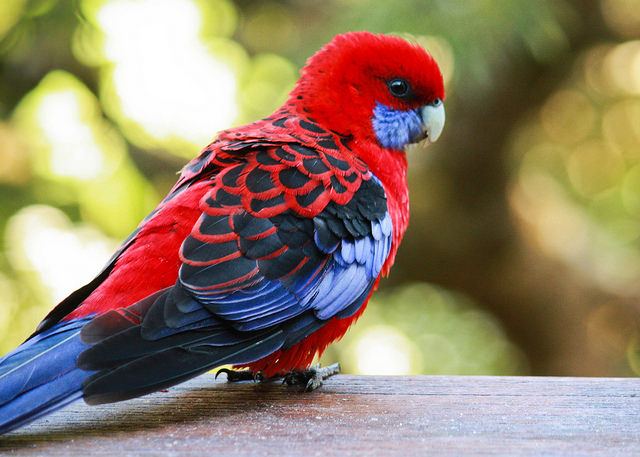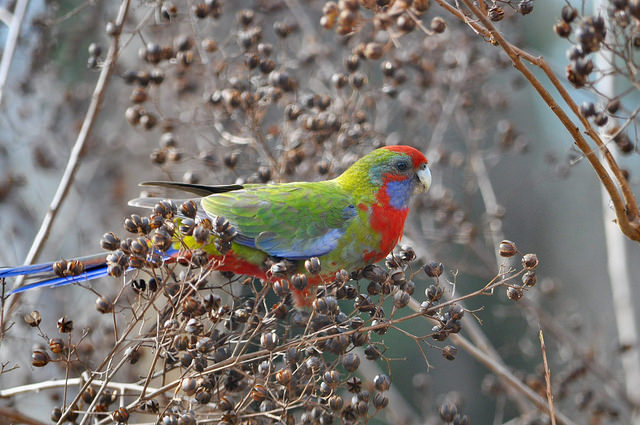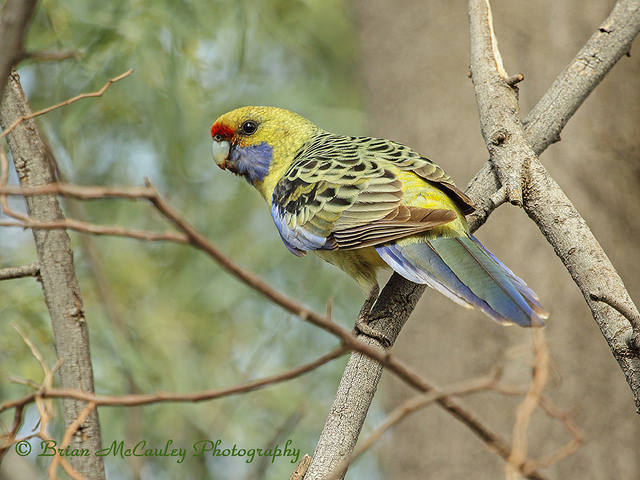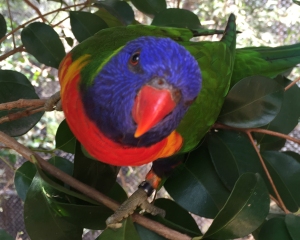Crimson rosella species profile – the secret life of crimson rosellas, their sub species, and the ring species concept. I know it’s been 3 weeks since I last posted instead if the usual 2 but I’ve been in and out of the field and I got my weeks the wrong way around, and by the time I realised it was yesterday and too late to do anything but post today!
Crimson Rosella
Platycercus elegans

Crimson rosellas are one of my favourite parrots, not because of their plumage or their distinctive calls, but because – where most birds with broods that hatch asymmetrically (that is, not all on the same day) feed the strongest or more competitive chicks – the crimson rosella parents share food equally between the chicks. Often the daddy rosella will feed the last-hatched/youngest chicks before the older/stronger chicks, and if you ask me that’s freaking adorable. If that wasn’t enough to make you think that these parrots are adorable, their juvenile plumage is this pretty green colour, and as they moult out they go this adorable speckled green/red mish mash while their adult plumage comes through and it’s seriously adorable. I mean come on look at it.

Crimson rosellas, like most other endemic parrots, nest in eucalyptus hollows, and breed towards the end of the year starting in September, with the latest pairings in January. But, contrary to their names, the crimson rosella isn’t always red. There are three main colour morphs of the crimson rosella, the first is the red birds we’re all well acquainted with (Platycercus elegans), then there is the yellow colour morph found around northern Victoria and Murray River (Platycercus elegans flaveolus) commonly called the yellow rosella, and the orange colour morph from Adelaide (Platycercus elegans adelaidae) commonly called the Adelaide rosella.

The most interesting part about the colour morphs of the crimson rosella is that they form a classic example of a ring species – where two divergent forms of a species exist together, connected geographically by intermediate forms. Which makes these parrots not only super sweet, adorable little muffins with blue cheeks, but also really biologically cool and interesting. Crimson Rosellas have it all! Interestingly, studies have shown that calls from the parrots at each end of the ‘ring’ do not have different calls for three of four tested variables.
And if you’ve gotten this far another reason I love crimson rosellas – as a totally anecdotal story – is that last Saturday, amidst my fieldwork, I was sitting in the middle of a gorgeous eucalypt forest in the Grampians National Park. As I sat there with my handheld microphone recording for parrot calls this gorgeous big crimson rosella lands on a branch not 1m from me, regards me with its beautiful liquid eye, sits with me for a minute and then calmly flies away. The serene nature of these birds makes them truly special. And now I’m waffling about nothing so I’m going to give you a quick species summary and leave you guys there!
Species Summary:
Name: Crimson Rosella
Average Size: 34cm
Average Weight: 129g
Diet: Eucalypt seeds, grasses, shrubs, sometimes insects and blossoms
Breeding Season: September-January.
Preferred Nesting Trees: Eucalypt
Population estimation: Least Concern
Information for this entry is from;
BirdLife Australia and they’re lovely online data sheets.
HANZAB Vol 4.
Australian Government Dept. of Environment – species profile and threats database.
Other sources linked within the text.
